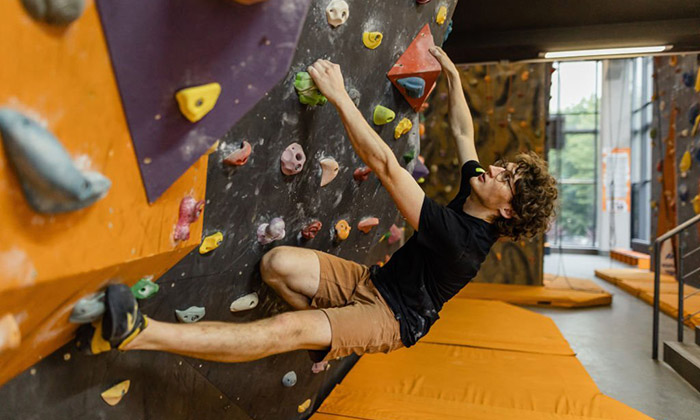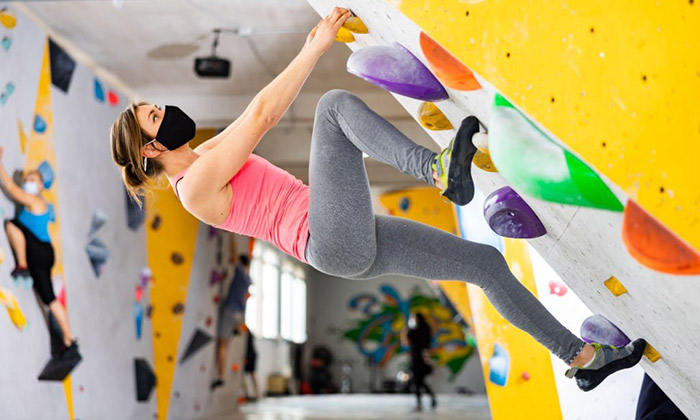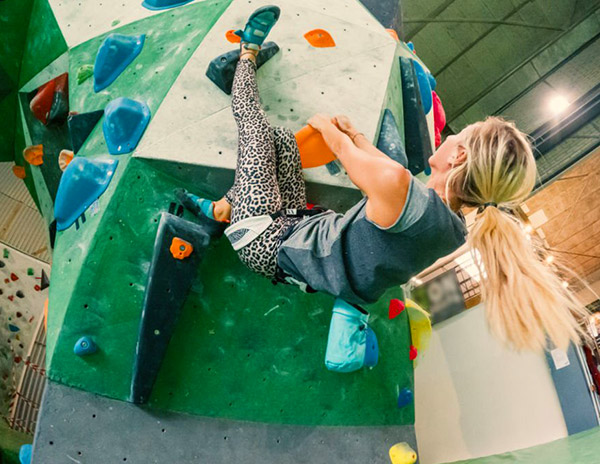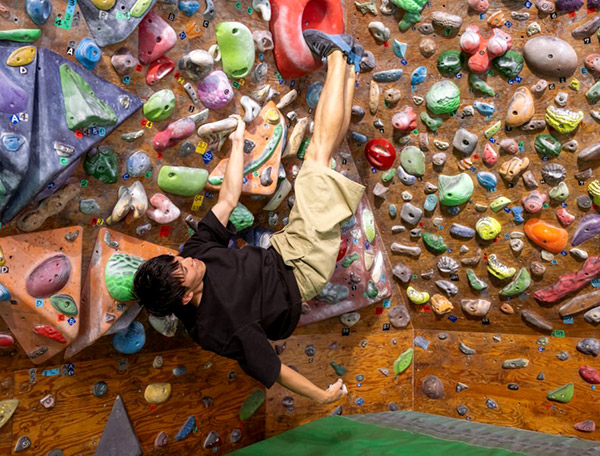Of all the climbing types, bouldering is unique in the sense that no harness or rope can catch the climber if you fall. The safety and security of the climber will be trusted to the padding on the ground, which will catch the climber after the fall.
To mitigate the risk involved, a climber must learn how to fall when bouldering. Different techniques can be done by the climber in order to have safer bouldering falls. Check the information below to find out.
Contents
Technique No. 1: Changing the MIndset from Climbing to Catmode
To manage their impact and increase your climbing longevity, executing all the basic falling techniques when dealing with bouldering falls is essential. The most important thing to remember during the fall is the ability of the climber to change their mindset from climbing to catmode.
The climber must mentally prepare for the landing. You need to spot your landing. Then, relax, drop, and roll to execute a free-falling technique. When it comes to the basic falling and landing mechanics, you need to widen your foot and stance for balance.
Slightly bend the knees and the elbows. Remember to retract your arms and absorb from the legs as you roll onto the mat. You want to tuck your chin and engage the neck to avoid whiplash.
Technique No. 2: Familiarize Tendencies to Avoid
The next technique is to learn all the tendencies a climber needs to avoid when landing from a bouldering fall. First, avoid landing with twisted ankles. Instead, land square on the bottom of the soles of the feet.
You must also avoid sticking the landing and bending forward from the lower back. Remember, we don’t get anything from sticking the landing. Also, avoid sticking your arms to reach for the floor. The climber must also need to avoid extending the legs perpendicularly from the torso and landing from the front or side of the torso.
In addition, you also need to avoid attempting to land on one leg. The climber must also avoid landing the feet together, which can lead to the face making contact with the climber’s knees upon impact. It is also a must to avoid allowing the knees to knock together when absorbing from the legs on impact.
Meanwhile, the climber must also avoid landing on top of the arm when landing on the side of your torso, which may result in pinning the arms against the floor.
Technique No. 3: Learn Advanced Falling Technique
Supine Double-Break Fall Technique
The first advanced falling technique is the supine double-break fall technique which is ideal when falling flat out of a horizontal position. Onto your back when you have insufficient height or time to correct yourself into a side-break fall position.
You will need to keep your shoulder extended with the shoulder width apart and with the knees slightly bent. Remember to tuck your chin to stabilize the neck and look at your belly. Upon impact, execute palms down straight arm slap simultaneously with both arms out at a 30 to 45-degree angle to the side of your torso.
This action will keep the arm parallel with a landing surface at the instant of the impact to dissipate the force of a fall and to counteract whiplash.
Side Break Fall Technique
Meanwhile, the side break fall technique is ideal when encountering a lateral drifting fall, which causes the body’s rotation to the side upon impact with the padding. Roll the lower shoulder forward to avoid landing on your arm.
Tuck your chin to support your neck. Keep your legs extended with the knees slightly bent, offset from one another, and parallel to the landing surface.
For proper execution of the side break falling technique, it is essential to remember to straight-arm slap and put the palms down with the arm on the lower side of your torso at an angle of 30 to 45 degrees in front of your torso.
This action will keep the slapping arm parallel with the landing surface at the instant of impact to dissipate the fall’s force and counteract whiplash.
Frontal Prone Break Fall Technique
This technique is ideal when you are over-rotating to the front of your torso with insufficient height or time to correct yourself into a side break falling position. Keep your legs shoulder-width apart with the thighs as an extension of the plane of the torso and your knees slightly bent.
Keep your neck neutrally straight with the head turned to one side. Execute with a simultaneous slap with the palms down with both arms bent at 90 degrees overhead, keeping the arms parallel with the landing surface at the instant of impact to dissipate your fall and to counteract whiplash.
Suppose you fall high enough from the ground. In that case, you can avoid executing this face plant technique by log rolling to one side of the other and executing the preferable side break falling technique that we discussed previously.
Conclusion
If you are just a beginner, learning how to fall when bouldering is necessary to make you safe when experiencing those falls. This article discusses the techniques and mindset you need to have when you experience one of those falls expected to happen when you are doing the sport.




